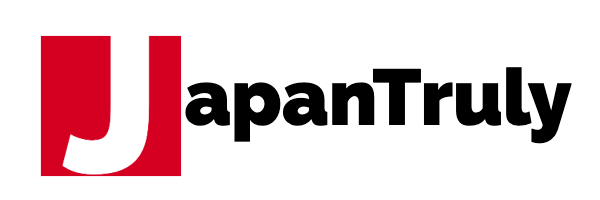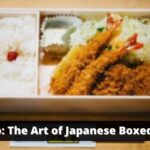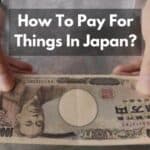Japanese Onomatopoeia refers to words that represent sounds. Common onomatopoeia in English are ‘pop’, ‘whoosh’, ‘bang’, and ‘baam’. Onomatopoeia make language more vibrant and lively.
Bring your Japanese to life with onomatopoeia! Dive into this ultimate list of 140 sound effects, bursting with words that mimic everything from thunderous roars to the pitter-patter of rain.
Express yourself like a native with these fun and vibrant words that paint a picture with sound!
Page Contents
List Of Japanese Onomatopoeia
Japanese Onomatopoeia For Animal Sound Effects (Giseigo)
Japanese Onomatopoeia For Dog
- ワンワン (wanwan) – woof, bark
- キャンキャン (kyankyan) – yap, yelp

Japanese Onomatopoeia For Cat:
- ニャーニャー (nyānyā) – meow
- モーモー (mōmō) – mew, meow (usually used for kittens)
Japanese Onomatopoeia For Bird:
- ピヨピヨ (piyopiyo) – tweet, chirp
- カーカー (kākā) – caw (for crows)
Japanese Onomatopoeia For Frog:
- ケロケロ (kero kero) – ribbit, croak
Japanese Onomatopoeia For Cow:
- モーモー (mōmō) – moo
Japanese Onomatopoeia For Horse:
- ヒヒーン (hihīn) – neigh, whinny
Japanese Onomatopoeia For Pig
- ブーブー (būbū) – oink
Japanese Onomatopoeia For Duck:
- ガーガー (gāgā) – quack
Japanese Onomatopoeia For Mouse:
- チューチュー (chūchū) – squeak
Japanese Onomatopoeia For Bee:
- ブンブン (bunbun) – buzz
Japanese Onomatopoeia For Elephant:
- パオーン (paōn) – trumpet
Japanese Onomatopoeia For Lion:
- ガオー (gaō) – roar
Japanese Onomatopoeia For Snake
- ヒスヒス (hisu hisu) – hiss
Japanese Onomatopoeia For Monkey
- キッキー (kikkī) – screech
Japanese Onomatopoeia For Owl
- フクロフクロ (fukuro fukuro) – hoot
Japanese Onomatopoeia For People Sound Effects (Giseigo)
Japanese Onomatopoeia For Laughing and Smiling
- ははは (hahaha) – hahaha, hearty laughter
- へへへ (hehehe) – hehehe, chuckling
- にこにこ (nikoniko) – smiling, grinning
Japanese Onomatopoeia For Crying
- うええ (uee) – sobbing, crying in distress
- ぐすん (gusun) – sniffle, weeping softly
- ないない (nainai) – boo-hoo, crying of a child
Japanese Onomatopoeia For Snoring
- ぐうぐう (gūgū) – snoring sound
- ぐっすり (gussuri) – soundly asleep, snoring peacefully
Japanese Onomatopoeia For Sneezing
- くしゃみ (kushami) – achoo, sneezing sound
Japanese Onomatopoeia For Giggling
- くすくす (kusukusu) – giggle, snicker
Japanese Onomatopoeia For Gasping
- びっくり (bikkuri) – gasping in surprise
Japanese Onomatopoeia For Sighing
- はぁ (haa) – sigh, exhale in relief or exhaustion
Japanese Onomatopoeia For Yawning
- あくび (akubi) – yawn, yawning sound
Japanese Onomatopoeia For Applause
- パチパチ (pachipachi) – clap, applause
Japanese Onomatopoeia For Footsteps
- トントン (tonton) – light footsteps
- ガリガリ (garigari) – heavy, scraping footsteps
Japanese Onomatopoeia For Running
- ドタドタ (dotadota) – sound of running
Japanese Onomatopoeia For Knocking
- ノックノック (nokku nokku) – knocking sound
Japanese Onomatopoeia For Hiccup
- しゃっくり (shakkuri) – hiccup sound
Japanese Onomatopoeia For Whispering
- ささやく (sasayaku) – to whisper, whispering sound
Japanese Onomatopoeia For Shouting
- ぐいぐい (guigui) – forcefully shouting
Japanese Onomatopoeia For Inanimate Sound Effects (Giongo)
Japanese Onomatopoeia For Rain:
- ドシャン (doshan) – heavy rain pouring down
- ザーザー (zāzā) – sound of continuous heavy rain
- パラパラ (parapara) – light rain falling
Japanese Onomatopoeia For Wind:
- ザワザワ (zawazawa) – rustling sound of wind
- ピューピュー (pyūpyū) – sound of a strong blowing wind
Japanese Onomatopoeia For Thunder:
- ゴロゴロ (gorogoro) – rumbling sound of thunder
- ガラガラ (garagara) – clattering sound, similar to thunder
Japanese Onomatopoeia For Water Flowing
- ゴボゴボ (gobogobo) – sound of water gushing or flowing
- シャワシャワ (shawashawa) – light splashing sound
Japanese Onomatopoeia For Footsteps:
- コツコツ (kotsukotsu) – sound of footsteps on a hard surface
- ドタドタ (dotadota) – heavy, thumping footsteps
Japanese Onomatopoeia For Knocking:
- コンコン (konkon) – knocking sound
- ガチャン (gachan) – sound of something heavy hitting or falling
Japanese Onomatopoeia For Clock Ticking:
- トクトク (tokutoku) – sound of a clock ticking
- キリキリ (kirikiri) – continuous ticking or clicking sound
Japanese Onomatopoeia For Applause:
- パチパチ (pachipachi) – clapping sound, applause
Japanese Onomatopoeia For Fire Crackling
- キュンキュン (kyunkyunkyun) – sound of a fire crackling
- ジュージュー (jūjū) – sizzling or hissing sound
Japanese Onomatopoeia For Phone Ringing:
- ガチャ (gacha) – sound of a phone ringing
- ピンポン (pinpon) – doorbell or phone ringing
Japanese Onomatopoeia For Glass Breaking:
- ガラスが割れる (garasu ga wareru) – sound of glass breaking
Japanese Onomatopoeia For Cutting:
- キリキリ (kirikiri) – sound of cutting or slicing
- ガリガリ (garigari) – rough, grinding sound
Japanese Onomatopoeia for States or Conditions (Gitaigo)
Japanese Onomatopoeia For Excited or Thrilled:
- ワクワク (wakuwaku) – feeling excited or thrilled
- ドキドキ (dokidoki) – heartbeat, feeling excited or nervous
Japanese Onomatopoeia For Relaxed or Calm:
- のんびり (nonbiri) – feeling relaxed, laid-back
- ほっこり (hokkori) – feeling warm and cozy
Japanese Onomatopoeia For Tired or Sleepy:
- ぐったり (guttari) – feeling exhausted or worn out
- うとうと (utouto) – feeling drowsy, dozing off
Japanese Onomatopoeia For Hungry:
- ぐーぐー (gūgū) – stomach growling, feeling hungry
Japanese Onomatopoeia For Thirsty:
- ペコペコ (pekopeko) – stomach growling, feeling hungry and thirsty
Japanese Onomatopoeia For Cold:
- ぶるぶる (buruburu) – shivering, feeling very cold
- ひえひえ (hiehie) – feeling chilly
Japanese Onomatopoeia For Hot:
- ほてる (hoteru) – feeling hot or feverish
- ほわほわ (howahowa) – feeling warm and fuzzy
Japanese Onomatopoeia For Nervous:
- そわそわ (sowasowa) – feeling restless or anxious
- きょろきょろ (kyorokyoro) – looking around nervously
Japanese Onomatopoeia For Surprised or Shocked:
- びっくり (bikkuri) – feeling surprised or shocked
- びくびく (bikubiku) – trembling in fear or surprise
Japanese Onomatopoeia For Pleased or Satisfied:
- ごきげん (gokigen) – feeling pleased or in a good mood
- うれしい (ureshii) – feeling happy or delighted
Japanese Onomatopoeia For Confused:
- ぼんやり (bonyari) – feeling vague or absent-minded
- まごまご (magomago) – feeling puzzled or bewildered
Japanese Onomatopoeia For Pain or Ache:
- ずきずき (zukizuki) – throbbing pain
- いたい (itai) – feeling hurt or in pain
Japanese Onomatopoeia For Emotions And Feelings (Gijougo)
Japanese Onomatopoeia For Happy or Joyful:
- うれしい (ureshii) – feeling happy or delighted
- はしゃぐ (hashagu) – feeling playful and excited
Japanese Onomatopoeia For Sad or Gloomy:
- かなしい (kanashii) – feeling sad or sorrowful
- ふさぎこんだ (fusagikonda) – feeling down or depressed
Japanese Onomatopoeia For Angry or Irritated:
- いかりっぽい (ikarippoi) – feeling short-tempered or irritable
- かんかん (kankan) – feeling furious or boiling with anger
Japanese Onomatopoeia For Surprised or Amazed:
- びっくり (bikkuri) – feeling surprised or shocked
- うろたえる (urotaeru) – feeling flustered or bewildered
Japanese Onomatopoeia For Scared or Fearful:
- こわい (kowai) – feeling scared or frightened
- びくびく (bikubiku) – feeling nervous or fearful
Japanese Onomatopoeia For Embarrassed or Shy:
- はにかむ (hanikamu) – feeling shy or bashful
- きまりが悪い (kimari ga warui) – feeling embarrassed or awkward
Japanese Onomatopoeia For Pleased or Content:
- ごきげん (gokigen) – feeling pleased or in a good mood
- にっこり (nikkori) – smiling with satisfaction
Japanese Onomatopoeia For Curious or Intrigued:
- うきうき (ukiuki) – feeling excited or thrilled
- わくわく (wakuwaku) – feeling excited or curious
Japanese Onomatopoeia For Grateful or Thankful:
- かんしゃ (kansha) – feeling grateful or appreciative
- ありがたい (arigatai) – feeling thankful or relieved
Japanese Onomatopoeia For Disappointed or Regretful:
- ざんねん (zannen) – feeling disappointed or regretful
- もったいない (mottainai) – feeling regretful for wasting something valuable
Japanese Onomatopoeia For Proud or Confident:
- ほこり (hokori) – feeling proud or having a sense of accomplishment
- じっとり (jittori) – feeling confident or self-assured
Japanese Onomatopoeia For Lonely or Isolated:
- さみしい (samishii) – feeling lonely or desolate
- やるせない (yarusenai) – feeling helpless or isolated
Japanese onomatopoeia for movement (Giyougo)
- Guru guru:
To spin around
- Yukkuri:
To do something slowly
- Koro koro:
Something rolls
- Uro uro):
Wandering around
- Suta suta:
Brisk walk
- Kote-t:
Nodding off to sleep
- Kaba-t:
Waking up with a start
- Gachi gachi:
Teeth chattering
- Shiba shiba:
Blinking rapidly
- Kaba kaba:
Quickly chowing down on your food
- Dadadadadadada:
Running
Japanese onomatopoeia for describing flavour and texture of food
Pari pari:
“crispy,” “crusty”
Saku saku:
“crunchy”
Shaki shaki:
“crisp and juicy”
Torotto:
“melt smoothly”
Funwari:
“fluffy,” “soft,” “light”
Kachi kachi or Kochi kochi:
“hard,” “stiff,” “rigid”
Pasa pasa:
“dry,” “dry out,” “hard to the touch”
Shittori:
“moist,” “soft to the touch”
Pritto:
“spicy and hot”
Kotteri:
“rich,” “heavy,” “lingering,” “fatty”
Assari:
“not heavy nor lingering,” “light”
Neba neba:
“sticky and slimy”
Japanese onomatopoeia for describing body type
Gari gari:
“scrawny,” “skinny,” “skin and bones,” “thin”
Hossori:
“slim,” “slender,” “thin”
Suratto:
“slim,” “slender”
Pocchari:
“chubby,” “plump”
Muki muki:
“muscular,” “brawny”
Gacchiri:
“well-built,” “big-boned,” “muscular”
Sara sara:
“smooth,” “dry,” “clean” (used when describing hair)
Bosa bosa:
“uncombed,” “tangled” (used when describing hair)
Japanese onomatopoeia for describing someone’s personality type or attitude
Chaki chaki:
“straightforward,” “frank”
Saba saba:
“refreshing,” “unfussy”
Tekipaki:
“alert,” “well-organized,” “crisp”
Honobono:
“relaxed,” “heartwarming”
Ottori:
”easygoing”
Nohohon:
“carefree,” “easygoing”
Chara chara:
“shallow,” “vain,” “playing around”
Seka seka:
“busy,” “restlessly,” “fidgety”
Guzu guzu:
“wasting time” or “dillydallying”
Japanese onomatopoeia for describing health conditions
Me ga shoboshobo suru:
“to have bleary eyes,” “to have puffy eyes”
Me ga gorogoro suru:
“feel like having something in one’s eye”
Hana ga zuruzuru deru:
“to have a runny nose”
Hana ga muzumuzu suru:
“one’s nose is tickling”
Mimi ga kīn to suru:
“to have a ringing noise in one’s ear,” “to have tinnitus”
Kushun:
sneeze sound
Kon kon:
cough sound
Goho goho:
strong cough
Zoku zoku:
shiver from fever
Japanese onomatopoeia for describing weather
Kaminari ga gorogoro naru:
Gorogoro is an onomatopoeia word which is used for the rumbling sound of thunder. Gorogoro is also used as the sound of a stomach, and the sound of a heavy object rolling.
Pikatto hikaru:
Pikatto is an onomatopoeia word to describe a flash of light or a short-lived glow. It can be used in many different ways, one of which is to describe lightning.
Ame ga zāzā furu:
Zāzā is an onomatopoeia word that describes the sound or state of heavy rainfall.
Ame ga potsupotsu furi hajimeru:
Potsupotsu or potsuripotsuri describes the sound of rain that started not too long ago.
Ame ga parapara furu:
Parapara describes the sound of it raining lightly.
Donyori:
“overcast,” “dull,” “sullen”
Karatto:
“clear up, (weather),” “dry,” “refreshing”
Jime jime:
“humid”
Tsuru tsuru:
“very slippery”
Bisho bisho:
“soaking wet”
Japanese onomatopoeia for expressing the action of sleeping
Gūg:
To describe an actual snoring sound. It also describes the state of sleeping well, often associated with snoring.
Gussuri:
To indicate sleeping soundly.
Suyasuya:
To describe the state of someone sleeping comfortably and quietly, accompanied by the sound of light breathing.
Utouto:
refers to the inability to resist drowsiness, such as dozing off or nodding off. It refers to a light sleep that takes place outside of one’s regular sleeping hours.
Japanese onomatopoeia for expressing the action of laughing
Kusukusu
is the giggling sound used to describe suppressed laughter.
Geragera
describes the sound of guffawing in a rather loud voice.
Kerakera
is used for a higher-pitched laugh than geragera.(“K” sounds are used to describe lighter or higher-pitched sounds than “G” sounds.)
Japanese onomatopoeia for expressing the action of eating
Paku paku
Used to describe the action of eating food quickly.
Pero pero
Used to describe the action of someone (a person or animal) licking something.
Japanese onomatopoeia for expressing the action of looking
Jirotto:
the action of looking sternly for a moment or giving an accusing look.
Jiro jiro
the action of blatantly and repeatedly looking something up and down, usually in an offensive way.
Chira chira
becoming invisible from time to time.
Kyoro kyoro
the action of looking around curiously or nervously.
Japanese onomatopoeia for expressing the action of crying
Gyāgyā:
high-pitched noisy crying or screeching.
Shikushiku:
quiet crying, usually by women or children.
Mesomeso:
the attitude of a crybaby who keeps moaning and groaning.
What is Japanese Onomatopoeia?
Japanese Onomatopoeia, known as “giseigo” (擬声語) and “giongo” (擬音語), are words that mimic or imitate sounds associated with actions, objects, or emotions.
They are an essential part of the Japanese language and play a significant role in everyday communication.
Onomatopoeia in Japanese is used to describe various sensory experiences, such as sounds, movements, textures, and emotions, adding depth and vividness to conversations and written expressions.
These onomatopoeic words are highly versatile and can be found in various forms, including adverbs, nouns, verbs, and adjectives. They are used to convey nuances that might be challenging to express using regular vocabulary.
For example, some common Japanese onomatopoeic words include:
- ざわざわ (zawazawa) – the rustling sound or a feeling of restlessness or unease.
- ぺたぺた (petapeta) – the sound of something sticky or adhesive.
- ゴロゴロ (gorogoro) – the sound of something rolling or rumbling, or a feeling of being content and relaxed.
- わくわく (wakuwaku) – a feeling of excitement or anticipation.
- しゅわしゅわ (shuwashuwa) – the sound of bubbling or fizzing, like a carbonated drink.
- びしょびしょ (bishobisho) – completely wet or soaked.
- うとうと (utouto) – dozing off or feeling drowsy.
Onomatopoeic words are frequently used in manga, anime, and everyday conversations, making them essential to understanding and appreciating Japanese language and culture.
They add a unique charm to expressions and help create a vivid and expressive atmosphere in the language.
- Related: Basic Japanese Words to Use
- Related: Basic Japanese Greetings To Use
Types of Japanese Onomatopoeia
Japanese Onomatopoeia can be categorized into several types based on the sounds they represent and the context in which they are used. Here are some common types of Japanese Onomatopoeia:
- Giseigo (擬声語): Giseigo are onomatopoeic words that imitate sounds associated with living beings, such as humans and animals. They are often used to describe the sounds made by animals or the sounds produced by people during various actions. For example:
- ワンワン (wanwan) – the sound of a dog barking.
- ニャーニャー (nyānyā) – the sound of a cat meowing.
- ガタガタ (gatagata) – a rattling or clattering sound.
- Giongo (擬音語): Giongo are onomatopoeic words that imitate non-living sounds, such as those produced by objects, nature, or the environment. They describe various sounds related to movement, impact, or natural phenomena. For example:
- ドンドン (dondon) – the sound of heavy footsteps or a pounding sound.
- カラカラ (karakara) – the sound of something rattling or clattering.
- ザー (zā) – the sound of pouring liquid, like water or rain
- Gitaigo (擬態語): Gitaigo are onomatopoeic words that describe the state, condition, or manner of an action or emotion. They are used to convey feelings, sensations, or textures. Unlike giseigo and giongo, gitaigo do not directly represent sounds. For example:
- きらきら (kirakira) – sparkling or glittering.
- ふんわり (funwari) – soft and gentle, like a fluffy texture.
- ぎゅっと (gyutto) – tightly or closely, as in hugging someone tightly.
- Gijōgo (擬情語): Gijōgo are a type of onomatopoeia that express emotions, feelings, or states of mind. They are used to add emotional depth and emphasis to conversations or descriptions. For example:
- わくわく (wakuwaku) – feeling excited or thrilled.
- びっくり (bikkuri) – being surprised or shocked.
- うんざり (unzari) – feeling fed up or annoyed.
To make things easier, there are two main types. They are Giongo and Gitaigo- words that represent sounds and words that represent feelings and emotions.
Grammatical Forms in Japanese Onomatopoeia
This may be a little tricky. The rules are a little vague. But usually, words that represent sounds are written in Katakana (like most Giongo) and words that represent feelings or conditions are written in Hiragana ( most Gitaigo).
But this depends on what type of sound it is. Katakana look quite hard and square like and Hiragana is rounded and soft. So with respect to that, Katakana are used for harder sounds and Hiragana are used for softer ones.
The three main grammatical forms of Japanese onomatopoeic expressions are as follows:
- Double form: The form represents a continuing state of a sound or emotion. For example, “waku waku” to express excitement or “pera pera” to express the act of speaking fluently.
- と form: This form is used to express sounds that are quick, short and cut off. For example, “hatto” used to represent a gasp or “zotto” to express a shiver running down the spine.
- り form: This form is used to express a sound or action that is slow or drawn out. For example, “nosori” used to represent walking in a lazy manner or “shonbori” used to represent dejection.
Japanese Onomatopoeia as Parts of Speech
In Japanese, onomatopoeia can take various grammatical forms, which allows for their versatility and usage in different parts of speech. Here are the common grammatical forms of Japanese onomatopoeia:
- Adverbs (副詞 – ふくし): Many onomatopoeic words in Japanese function as adverbs, describing how an action is performed or the manner in which something happens. They can modify verbs, adjectives, or other adverbs. For example:
- さっと (satto) – quickly, briskly
- ゆっくり (yukkuri) – slowly, leisurely
- ひっそり (hissori) – quietly, silentl
- Nouns (名詞 – めいし): Some onomatopoeic words can act as nouns, representing a sound, action, or state directly. They can also be combined with other nouns to create compound words. For example:
- ガラスの音 (garasu no oto) – the sound of glass breaking
- ポンプ音 (ponpu on) – the sound of a pump
- Adjectives (形容詞 – けいようし): Onomatopoeia can also function as adjectives, describing the state or condition of something. They are used to convey various sensory experiences. For example:
- あつい (atsui) – hot (when describing something warm to the touch)
- さむい (samui) – cold (when describing something chilly)
- Verbs (動詞 – どうし): While less common, some onomatopoeic words can also function as verbs, describing actions or movements. For example:
- ズキズキする (zukizuki suru) – to throb or ache (when describing a pulsating pain)
- ズルズル滑る (zuruzuru suberu) – to slide or slip smoothly
- Interjections (感動詞 – かんどうし): Onomatopoeia are frequently used as interjections to express emotions, reactions, or responses. These are often standalone words without specific grammatical connections to other parts of speech. For example:
- びっくり (bikkuri) – expressing surprise
- わーい (wāi) – expressing joy or excitement
It’s essential to note that onomatopoeic words in Japanese can be quite diverse, and their usage can vary depending on the context and speaker’s intent. Some onomatopoeia may have multiple grammatical functions, adding to the richness and expressiveness of the Japanese language.
How many Japanese onomatopoeia are there?
The Japanese language has more than a thousand onomatopoeia with syllabic and repetitive words.
What is Japanese onomatopoeia for dogs barking say?
In Japanese onomatopoeia, the sound a dog makes is represented by “wan wan”.
What do Japanese onomatopoeia for pigs sound?
In Japanese onomatopoeia, the sound a pig makes is represented by “buu buu”.
What does doki doki mean in Japanese?
In Japanese, “doki doki” is used to represent the sound of the heart beating because of excitement or nervousness.
What does PIKU PIKU mean?
“piku piku” (ピクピク) is a Japanese onomatopoeic expression that represents a pulsating or twitching movement. It is often used to describe something that is rapidly pulsing or quivering, such as a flickering light, trembling muscles, or a beating heart.
For example, if someone says, “ネオンサインがピクピクしている” (neon sain ga pikupiku shiteiru), it means “The neon sign is flickering.”
What is the Japanese smile onomatopoeia?
The Japanese smile onomatopoeia is “にこにこ” (niko niko). This onomatopoeic expression represents a smile or grinning facial expression. It is often used to describe someone smiling happily or a pleasant, cheerful atmosphere.
For example:
- 彼女はにこにこして挨拶した。(Kanojo wa niko niko shite aisatsu shita.) Translation: She greeted us with a smile.
What is the Japanese sound of sleeping?
The Japanese onomatopoeia for the sound of sleeping or snoring is “ぐうぐう” (guuguu). It represents the deep and rhythmic breathing sounds made by someone who is soundly asleep.
This onomatopoeic expression is commonly used to describe a person sleeping peacefully and can also be associated with snoring in a gentle or soothing manner.
For example:
- 彼はぐうぐうと寝ていました。(Kare wa guuguu to neteimasita.) Translation: He was sleeping soundly.
Also Read:
- What Japanese Say Before Eating
- Easy Japanese for Food Ordering
- Easy Japanese Phrases for Eating at Restaurant





